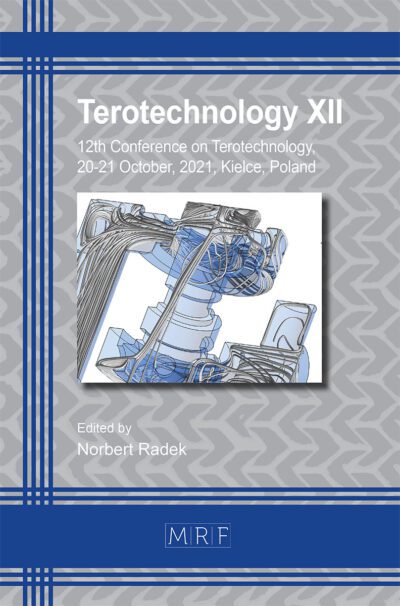Numerical Simulation on Conical Shaped Charge with Copper Liner in Several Typical Shapes
Zhiyue Liu, Junzhao Zhai, Shuai Su
download PDFAbstract. Conical shaped charges with five types of liner geometries: (1) cone, (2) round-tipped cone (3) hemisphere, (4) ellipsoid, and (5) trumpet, have numerically been simulated to investigate jet formation and target penetration capabilities via LS-DYNA Multi-Materials Arbitrary Lagrangian Eulerian (MMALE) technique. The purpose is to observe the influences of liner shapes on performance of shaped charge setup and, the final behavior of such shaped charge devices. The explosive filling and the liner material are kept to be identical in the study. Simulation results show that the hemispherical liner brings out the lowest penetration performance, while the cone and round-tipped cone shaped liners result in highest performance, and, ellipsoid and trumpet liners are of middle performance, in comparison. Especially, shaped charges with both ellipsoid and trumpet liners present no remarkable discrepancy on penetration depth, but the entrance craters are of dramatically geometrical difference. Such penetration features are anticipated to be applicable in technical design of shaped charges for various specific applications.
Keywords
Shaped Charge, Copper Liner, Jet Formation, Penetration, Numerical Simulation
Published online 7/30/2019, 6 pages
Copyright © 2019 by the author(s)
Published under license by Materials Research Forum LLC., Millersville PA, USA
Citation: Zhiyue Liu, Junzhao Zhai, Shuai Su, Numerical Simulation on Conical Shaped Charge with Copper Liner in Several Typical Shapes, Materials Research Proceedings, Vol. 13, pp 7-12, 2019
DOI: https://doi.org/10.21741/9781644900338-2
The article was published as article 2 of the book Explosion Shock Waves and High Strain Rate Phenomena
![]() Content from this work may be used under the terms of the Creative Commons Attribution 3.0 licence. Any further distribution of this work must maintain attribution to the author(s) and the title of the work, journal citation and DOI.
Content from this work may be used under the terms of the Creative Commons Attribution 3.0 licence. Any further distribution of this work must maintain attribution to the author(s) and the title of the work, journal citation and DOI.
References
[1] W. Walters and J. Zukas, Fundamentals of Shaped Charges, John Wiley & Sons, New York, 1989.
[2] S. V. Fedorov, Ya. M. Bayanova, S. V. Ladov, Numerical analysis of the effect of the geometric parameters of a combined shaped-charge liner on the mass and velocity of explosively formed compact elements, Combustion, Explosion, and Shock Waves 50(2015) 130-142. https://doi.org/10.1134/s0010508215010141
[3] L. Cao, X. Han, X. Dong, and Y. Zhang, Numerical Simulation of Effect of Liner Structure on Performance of Shaped Charge Jet, MINING R & D 29(2009) 98-100.
[4] LS-DYNA Manual R.9448, Livermore Software Technology Co., 2018.
[5] D. Shi, Y. Li, and S. Zhang, Explicit Dynamic Analysis Based on ANSYS/LS-DYNA, Tsinghua University Press, Beijing, 2005 (in Chinese).
[6] B. M. Dobratz and P. C. Crawford, LLNL Explosives Handbook, Lawrence Livermore National Laboratory Report, 1985.
[7] D. J. Steinberg, S. G. Cochran, and M. W. Guinan, A Constitutive Model for Metals Applicable at High Strain Rate, J. App. Phys. 51 (1980) 1498-1504. https://doi.org/10.1063/1.327799
[8] M. Katayama, S.Kibe, and T.Yamamoto, Numerical and Experimental Study on the Shaped Charge for Space Debris Assessment. Acta Astronautica 48 (2001) 363-372. https://doi.org/10.1016/s0094-5765(01)00073-x

































